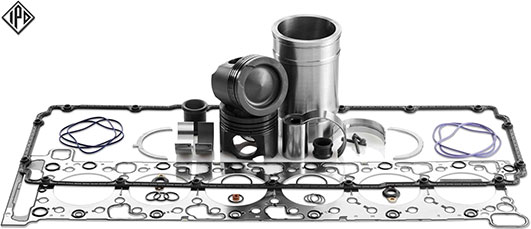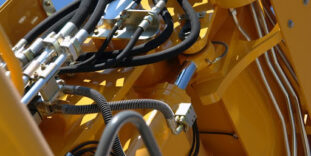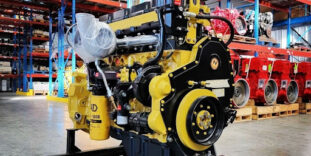When maintaining and repairing heavy equipment, one of the most critical decisions is choosing between OEM (Original Equipment Manufacturer) and aftermarket parts. This decision can significantly impact the performance, longevity, and cost-effectiveness of the equipment. Understanding the differences between these options and the factors to consider can help you make an informed choice.
Understanding OEM Parts
Definition and Source
OEM parts are manufactured by the original producer of the equipment. These parts are designed to fit and function exactly like the parts that came with the equipment when it was new. For example, if you own a Caterpillar bulldozer, OEM parts would be produced by Caterpillar or a designated supplier.
Advantages of OEM Parts
- Quality Assurance: OEM parts are guaranteed to meet the manufacturer’s specifications and standards. This ensures compatibility and reliability.
- Warranty Protection: Using OEM parts often keeps your equipment under warranty, protecting you from potential repair costs.
- Perfect Fit: Since these parts are made specifically for your equipment model, they fit perfectly, reducing the risk of installation issues.
- Long-Term Performance: OEM parts are designed for longevity and performance, maintaining the integrity of the equipment over time.
Understanding Aftermarket Parts
Definition and Source
Aftermarket parts are produced by third-party manufacturers not associated with the original equipment manufacturer. These parts are designed to fit and function similarly to OEM parts but are often available at a lower price.
Advantages of Aftermarket Parts
- Cost-Effective: Aftermarket parts are usually less expensive than OEM parts, making them an attractive option for budget-conscious operations.
- Wide Availability: These parts are often more readily available, reducing equipment downtime and improving operational efficiency.
- Diverse Options: The aftermarket industry offers a wide range of parts, allowing you to choose from different quality levels and price points.
- Potential for Innovation: Some aftermarket parts incorporate improvements or innovations that OEM parts may not have, potentially enhancing equipment performance.
Key Considerations When Choosing Between OEM and Aftermarket Parts
- Equipment Age and Condition
- Older Equipment: For older equipment, aftermarket parts can be a practical and cost-effective solution, especially if the manufacturers discontinue older OEM parts.
- Newer Equipment: For newer equipment, still using OEM parts may be more optimal since parts are more readily available for newer machines and equipment models.
- Availability and Lead Time
- Immediate Need: If you need parts quickly to minimize downtime, aftermarket parts are often more readily available.
- Planned Maintenance: For planned maintenance or repairs, ordering OEM parts in advance can ensure you have the right parts when needed.
- Supplier Reputation
- Reputable Aftermarket Suppliers: Ensure that the aftermarket parts supplier has a good reputation for quality and reliability.
- OEM Dealer Support: OEM parts often come with the backing and support of the original equipment manufacturer, providing added peace of mind.
Finding High-Performance Aftermarket Parts at IPD
IPD specializes in providing high-quality aftermarket parts for heavy-duty engines, particularly for industries such as on-highway, construction, mining, power generation, natural gas, drilling, marine, and railway. IPD offers a broad range of components designed to meet or exceed OEM standards, ensuring reliability and performance.
Key Features of IPD Aftermarket Parts
- Quality and Performance: IPD parts undergo rigorous testing and quality control to ensure they meet the high standards required for heavy-duty applications. This ensures the parts deliver reliable performance and longevity.
- Cost-Effectiveness: By offering parts that are more affordable than OEM options, IPD helps reduce maintenance costs without compromising on quality. This makes it easier for businesses to manage their budgets effectively.
- Extensive Inventory: IPD provides a wide selection of parts for various engine models and applications. This extensive inventory ensures that customers can find the parts they need quickly, minimizing equipment downtime.
- Innovation and Improvement: IPD continually seeks to improve its products, incorporating the latest technologies and innovations to enhance the performance and reliability of its parts. This commitment to innovation ensures that customers receive high-performance solutions for their equipment needs.
- Customer Support and Service: IPD offers exceptional customer support, helping customers select the right parts for their specific requirements. This support includes technical assistance, ensuring that parts are installed correctly and function optimally.
By choosing high-performance aftermarket parts from IPD, businesses can ensure their heavy equipment operates efficiently and reliably, even under the most demanding conditions. This can lead to improved productivity, reduced downtime, and overall cost savings.
Balancing Cost and Quality
Choosing between OEM and aftermarket parts for heavy equipment is a nuanced decision that depends on various factors, including equipment age, availability, and the specific needs of your operations. By understanding the features and benefits of each option and considering the specific demands of your equipment and operations, you can make informed decisions that optimize performance, minimize downtime, and manage costs effectively. Whether you choose OEM or aftermarket parts, the key is to prioritize quality, reliability, and the long-term success of your heavy equipment.
For more information about aftermarket parts for heavy equipment. Contact IPD today!




